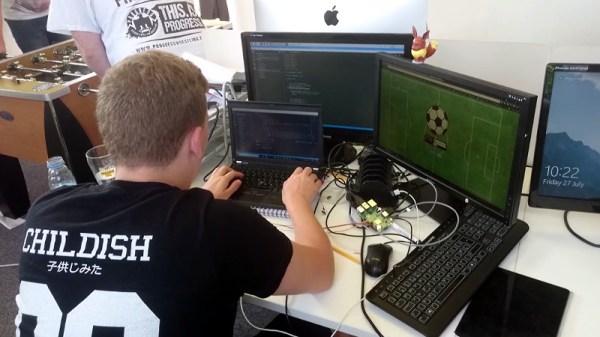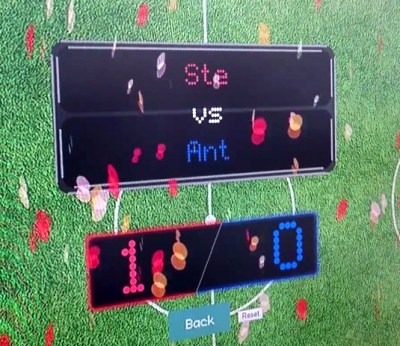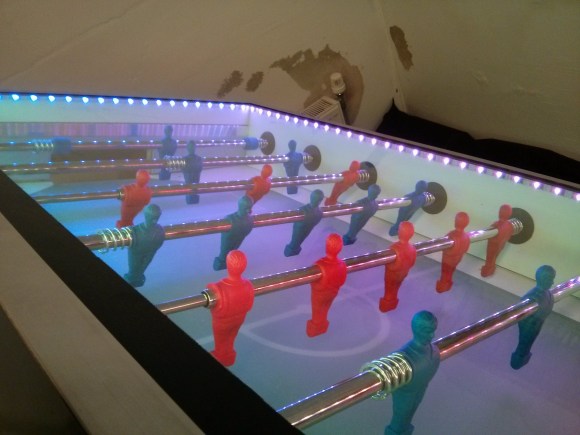[Xander Naumenko] is back with another bonkers project. This is the same creator that built a working 32-bit computer inside a Terraria world. This time it’s a bit more physical of a creation: a self-playing foosball table.
We’re not sure of the impetus for this idea, but we’re delighted to see the engineering it took to make it work. It sounds so simple. It’s just servos mounted on linear actuators, right? Oh, and some computer vision to determine where the ball actually is on the table. And the software to actually control the motors, pass the ball around, and play offense and defense. So maybe not so simple. All the code and some other resources are available under the MIT license.
As to while the claim of “best” foosball robot has an asterisk? That’s because, although we’ve seen a few potential competitors over the years, there isn’t yet a world foosball competition. We’re hoping that changes, as a tournament of robots playing foosball sounds like a sports event we’d show up for!
Continue reading “Foosbar: The World’s Best* Foosball Robot From Scratch”






 [Sebastian] works at an engineering company testing car ECUs, head units, and all the confusing wiring harnesses found in the modern-day automobile. It’s good work, but not exactly fun, so [Sebastian]’s bosses bought a foosball table so the employees could unwind. The foosball tables have been there for several years, and now everyone at the company is really, really good at twirling little football players on a stick. With their current rule set (at least 6 goals and 2 goals ahead), matches last at least twenty minutes.
[Sebastian] works at an engineering company testing car ECUs, head units, and all the confusing wiring harnesses found in the modern-day automobile. It’s good work, but not exactly fun, so [Sebastian]’s bosses bought a foosball table so the employees could unwind. The foosball tables have been there for several years, and now everyone at the company is really, really good at twirling little football players on a stick. With their current rule set (at least 6 goals and 2 goals ahead), matches last at least twenty minutes.










